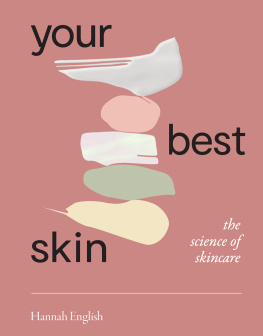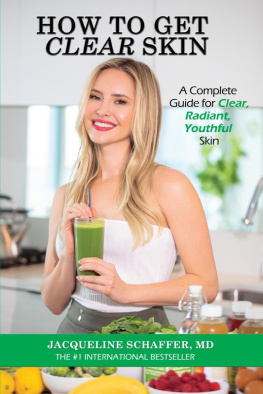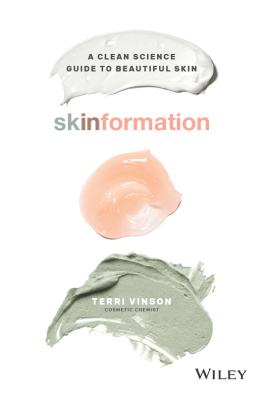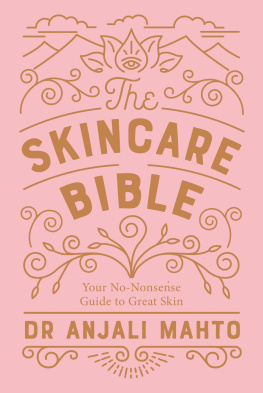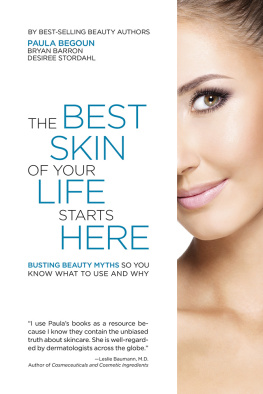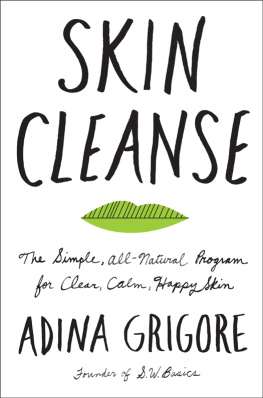
Skin is the largest organ in the body, so it makes sense for us to care for it in the same way we would care for our heart through exercise. Its important that we chat about the biology and biological function of skin, because it takes all of the stress and judgement out of the equation. Your cells and body are just doing what they do and you can help them along, if you want, with skincare.
This chapter has a few diagrams and gets a little sciencey, but dont worry, Im not your mean high school science teacher in chino shorts and knee socks. I firmly believe a lot of the issues that people have with science come from the way its delivered. Well take it slow and therell be no walls of text here. You can do it I promise.
Your skins job
Your skin is literally the barrier between the inside of your body and the outside environment, and a key component of your immune system. Simply put, it keeps your bones, organs and the water you need in, and the germs and sun out, and it keeps you warm and cool. Skin also generates vitamin D (more on that in ), and it even receives and communicates signals for temperature, pain, pressure, touch, and the presence of chemicals and change in pH. These signals travel to your brain via nerves.
Understanding your skins function as a barrier is the key to supporting and looking after it. It acts as a barrier from UV, germs, water and other environmental challenges. It also protects against foreign substances even medicines must be designed specially to penetrate skin. Its not easy.
Face vs body
Skin on the face is different to the skin on the body. Its thinner (specifically in the dermis), and there are more sweat and oil glands. Your face, neck, scalp and chest have between 400 and 900 oil glands per square centimetre, while other parts of the body have 100 or less oil glands per square centimetre (and none on the palms of your hands and soles of your feet).
Skin is thinner and drier in your eye area and its more sensitive. It tends to be the first place that skin changes as we age thanks to our constant squinting, blinking and facial expressions. Skin around the jawline, neck and upper lip is more sensitive to hormones, which is why we grow hair there and why these areas can be prone to acne. The skin on the lips is thin and doesnt moisturise itself, but it has more nerve endings so its more sensitive to touch. Its important to protect your lips from the sun.
Skin on the palms of the hands and soles of the feet has an extra layer of epidermis called the stratum lucidum, which makes it thicker. Theres no hair on the palms and soles, and thus no oil glands. There are, however, lots of nerve endings, giving us a more precise sense of touch.
We also have different types of sweat glands and different types of sweat. Eccrine sweat is secreted all over the body and is mostly water and electrolytes. This type of sweat cools us down. After puberty, we start to make apocrine sweat, which is secreted from the underarm and groin areas. This is emotional sweat and it contains lipids, steroids and proteins. This is the kind of sweat that mostly contributes to body odour.
Lets talk about structure
There are three layers to your skin: the epidermis at the top (on the outside), the dermis in the middle and the hypodermis underneath. There are also different types of cells and other substances present in the skin.
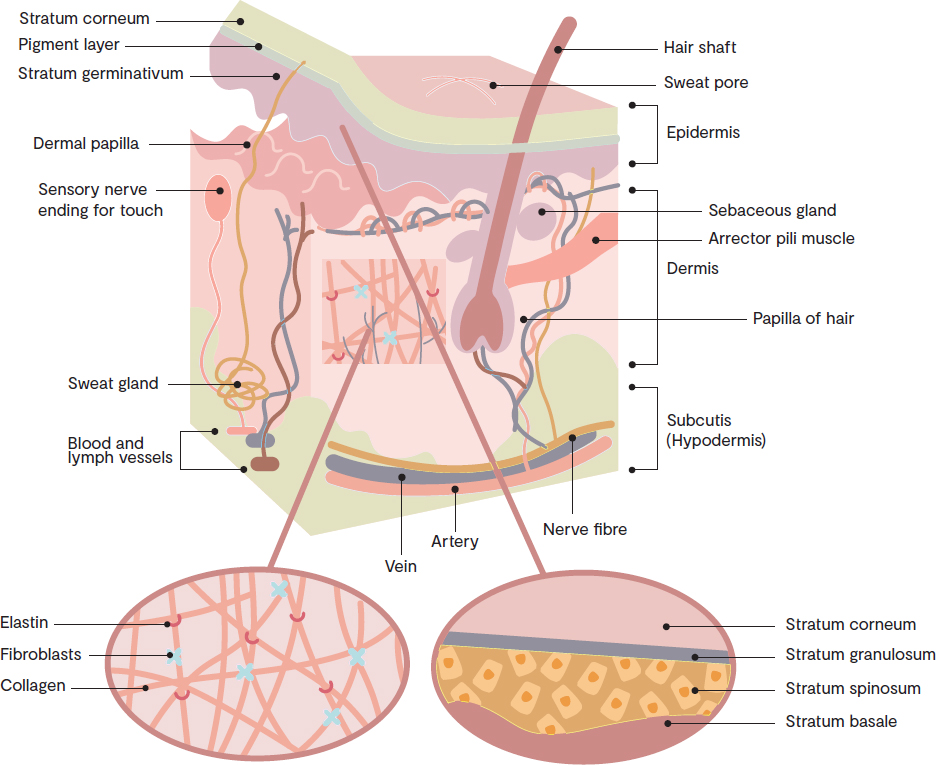
Epidermis
The epidermis is the top layer of your skin and its there to keep water in and the environment out. There are four layers within the epidermis (see previous diagram) (but five layers on the palms and soles) and several cell types are found here. Lets meet the relevant ones.
Keratinocytes make up 90% of the cells in the epidermis and they produce proteins called keratin (also found in hair and nails) and filaggrin. Their life cycle is 2440 days. Thats how long it takes for a skin cell to turn over, to generate in the basal layer, fill with keratin and migrate to the top layer, releasing barrier lipids (waxy fats that help to keep water in and bad bacteria out) as they go. At the top layer, keratinocytes are fully cornified/flattened/full of keratin and are called corneocytes. This transformation and shedding process will take longer as things start to slow down in your body over time, but it can be helped along with skincare.
Corneocytes are keratinocytes at the end of their life cycle. There are 1520 layers of corneocytes in the stratum corneum, surrounded by your skins barrier lipids. Think of it as a brick wall: the corneocytes are the bricks and the lipids are the mortar. Together, they make up the skins barrier. The corneocytes are nearly ready to shed and come off naturally in a process called desquamation (or when you exfoliate). When they come off, this signals the lower layers to make more keratinocytes.
Melanocytes exist in the basal layer (stratum basale) of the epidermis, with the new keratinocytes. They make the pigments for your skin and hair and transfer brown spots (melanin) to surrounding keratinocytes. They live for at least 35 years. These are our target when treating hyperpigmentation.
The following figure shows the top layers of the epidermis acting as your skins barrier. If the barrier is disrupted (from harsh cleansing, for example), its easier for water to escape and irritants to get in.
Other substances in or on the epidermis include the microbiome, barrier lipids, sweat, sebum, the skincare youve applied and the air pollution stuck to your skin.
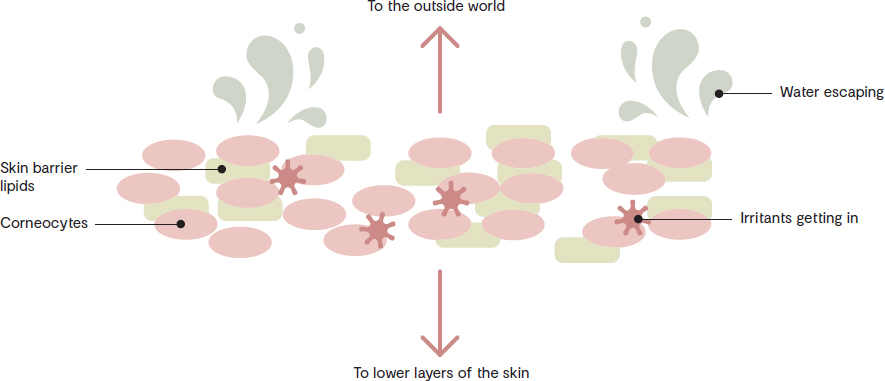
The microbiome refers to the microorganisms (or microbes) living on and in our skin. Its a blend of bacteria, fungi (like yeasts) and viruses, found mostly in the epidermis and hair follicles. There are around 1000 species of bacteria on human skin. The bacteria are mostly helpful or harmless and help to fight off the bad bacteria by eating the nutrients and starving them, influencing the immune system or producing molecules to harm them.
The bacteria on your armpit will differ from the bacteria on your face because they like different conditions. This variation in bacteria is why our underarms and feet have a different odour. As for acne bacteria, theyre on everyones skin but only sometimes cause problems (for the lucky ones).
The microbiome is influenced by many things pollution, skincare, medication, pH, the bodys immune system ... the list goes on. It also influences things in turn, including our immune system and conditions such as eczema, acne, rosacea and psoriasis. The skin microbiome is an emerging area of research.
Dermis
The dermis is the layer below the epidermis and is much thicker. It is a structural, functional layer of connective tissue, meaning it connects things together. This is where collagen is made, so if a product is designed to stimulate collagen or firm skin, the active ingredients need to penetrate the dermis. Your skins blood vessels sit in this layer, along with nerve endings, sweat glands, oil glands and hair follicles (pores). The dermis is mostly made up of proteins and other cell types.
Fibroblasts make your skins collagen, elastin, and cushioning water-grabbing molecules such as hyaluronic acid.
Macrophages
Next page
